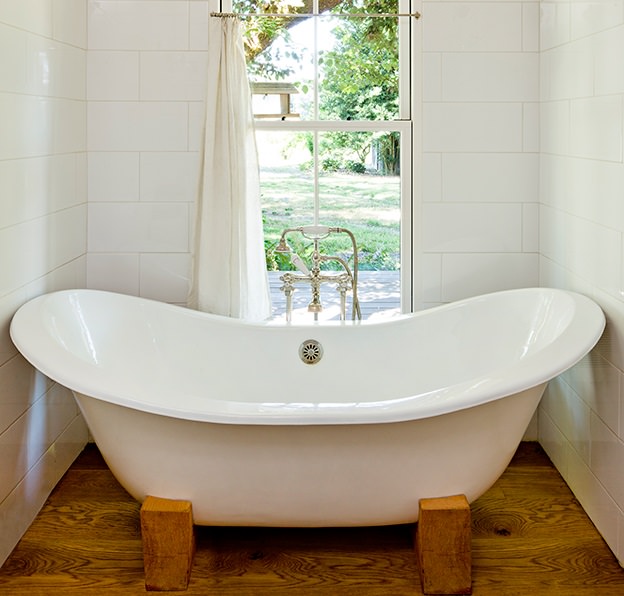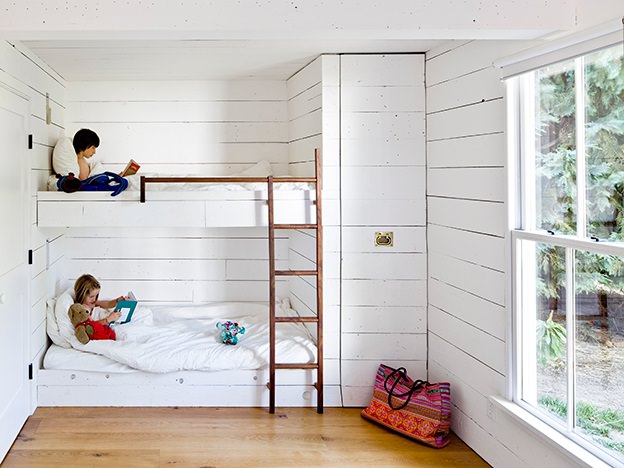
Jessica Helgerson, owner of Jessica Helgerson Interior Designs in Portland, Ore., has a knack for transforming indoor spaces big and small. But when she and her architect husband, Yianni Doulis, fell for a 540-square-foot tiny home on Sauvie Island, just 15 minutes from Portland, they had grand dreams for the tiny space.
Together, they outfitted their small home with sustainability and style in mind. For four years, they raised their two children and grew food on their property. While they have since relocated to Portland, they decided to keep their tiny home as a guest house for family and friends. Here, they share ways you too can transform your home, no matter the size.
1. Incorporate Reclaimed Materials

“Pretty much everything in our home used reclaimed materials,” Helgerson says. “Our bathtub came out of a demo site. The range was a vintage find. All of the interior wood was from the barn on property.” Using reclaimed materials makes sense financially and environmentally, while giving the home a distinctive style.
2. Choose Local

“I think it matters where you live and to make choices that go along with that,” Helgerson says. “My husband made our dining room table out of local walnut. The floors are Oregon white oak.”
Helgerson also decided to construct a living roof using mosses they found on the nearby Columbia Gorge rocks. The roof provided a beautiful aesthetic effect against the white exterior while providing excellent insulation.
“I think green roofs are really useful in urban settings,” she adds. Native plants can help with water runoff, wildlife and offer a green respite from manmade materials.
3. Think Big With Small Spaces

Small spaces are sustainable by design, less energy, less materials. For Helgerson, small spaces require big thinking. Instead of just buying ready-made furniture, she had to think of a custom solution. In the living room, she decided to do built-in seating to create more space. She sought out a local upholsterer who created foam seats.
“We’ve had nine people sleep comfortably in the home,” she adds. “Thinking vertically becomes important. We had vertical sleeping lofts for the children.”
4. Invest In Energy-Saving Products

While reusing original materials is important, Helgerson says they replaced the items that needed upgrades. That meant, using triple sheet windows and new energy-efficient insulation.
“The woodburning stove actually heated the whole house,” Helgerson says. “We just needed a few tiny electric heating panels in the children’s room and bathroom. That’s all it took to keep the house cozy all winter.”





